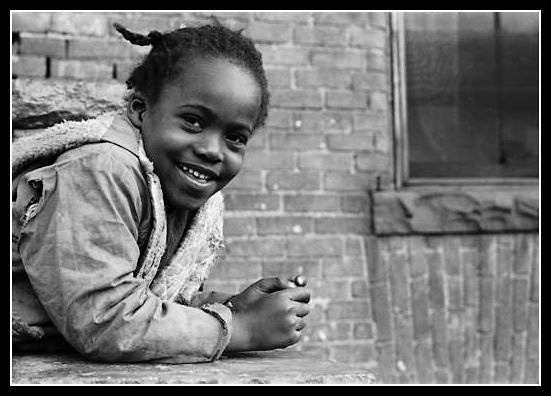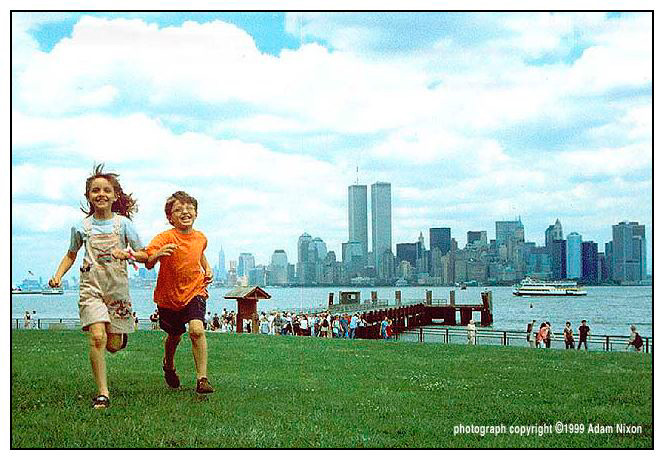Lessons in Composition for the Art Photographer
Version 2.3, Page 1, ©2001 by Dale Cotton, all rights reserved.
Dedicated to Dale Tener, whose insights have lasted a lifetime

Frontispiece #1. Girl, Detroit 1966*, © 2001 by Norman Koren
Why is the young lady in the above picture not centered in the frame? Was there some reason to include the window? The young lady is all roundnesses; everything else in the frame is rectangular; does this have any compositional significance?
Note, Sep 11 2002: I had originally planned to use the following picture as frontispiece but the events of a year ago intervened. I love this photo too much to exclude it indefinitely; hopefully the passing of a year has been sufficient grace...

Frontispiece #2. Twin Towers, 1999 by Adam Nixon
In Frontispiece 2 we find the same conundrum: a master photographer takes a spontaneous snapshot of his two children on a NYC vacation. Yes, he wants to show where the children are as well as the children themselves. Would you have put your own children off to one corner of the frame, putting the twin towers and ferry dock in the centre? If so, why?
By the time you finish this tutorial you will be able to answer these questions and many more besides.
Many people who are proficient with a camera could never "draw a straight line" as a child and so steered clear of art classes and the like. In my case, from the age of four on you would have been hard put to find me without a pencil or paintbrush. I was "discovered" by my grade school teachers and given formal training at some early age. I use a camera now, not because I can't draw and paint, but because I can't be bothered to.
Even if your childhood art attempts were chuckled over rather than praised, I want you to throw away any lingering sense of artistic inferiority you may still retain. The camera levels the playing field quite nicely. What you probably missed out on that would be useful, is formal training in composition and in colour theory. So I'll pass on to you the golden rule of the visual arts right now:
There are no absolute rules of composition and colour usage.
What there are is a grab-bag of tricks-of-the-trade that help point you in a useful direction. I'll teach you those tricks on one condition: that you never put any of them up on a pedestal but instead feel free to do just the opposite if the results please you. The penalty for violating this anti-rule is stagnation and the visual arts equivalent of writer's block. So I'll present what I know about composition as a series of guidelines.
I've never read a book on composition. I first learned about composition was via art instruction that included educational tours of a major metropolitan art museum. This was an oral tradition passed on from one generation to the next, and that's the way I'll approach this tutorial. I don't have a museum handy; I'll have to make do primarily with my own images plus those of friends. Hopefully, they'll serve to illustrate the underlying concepts.